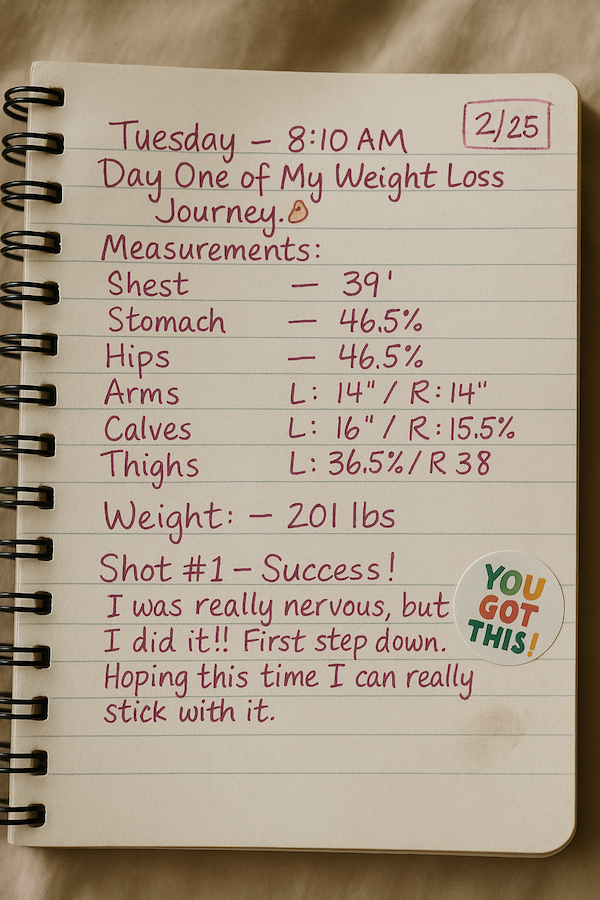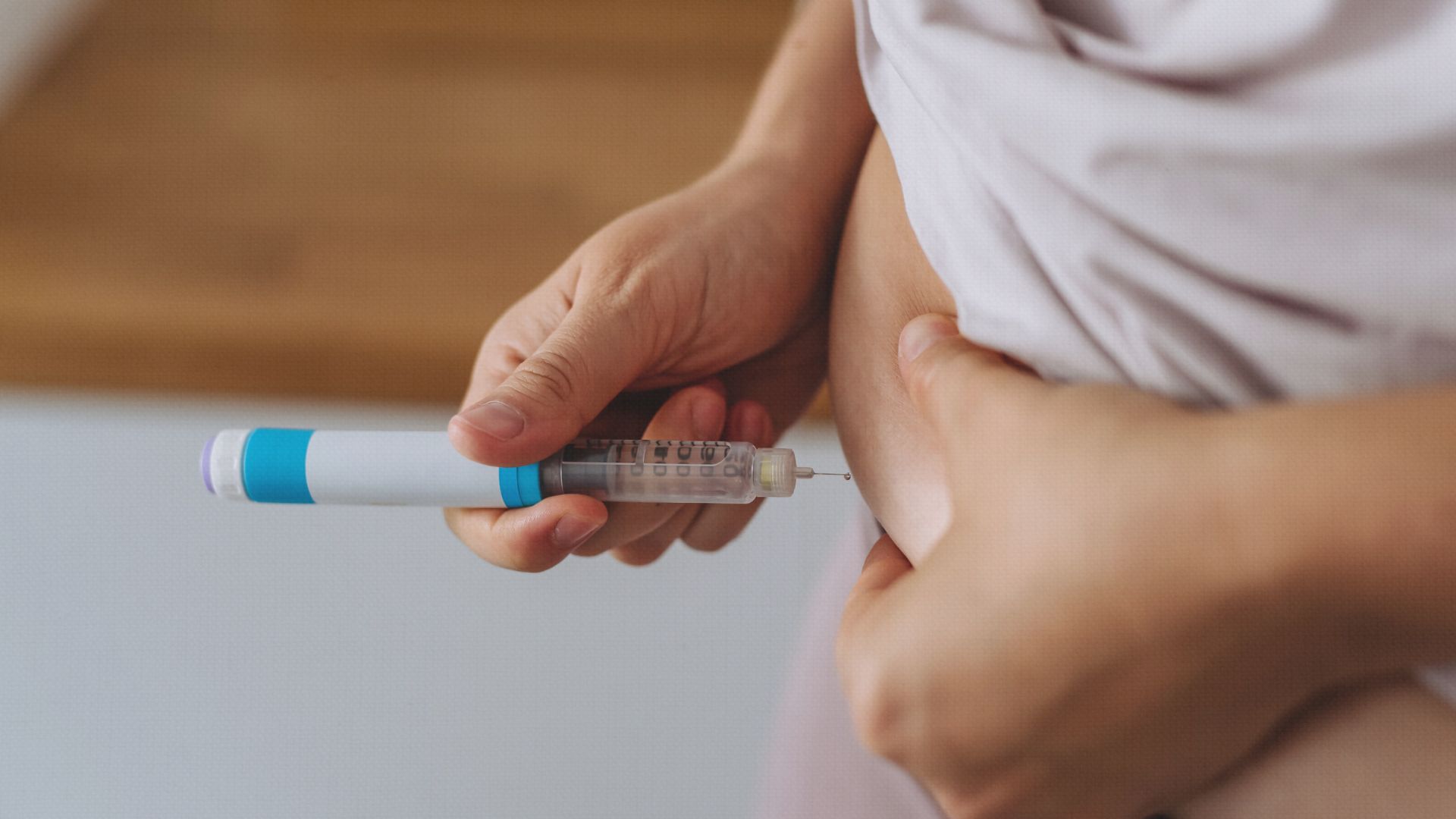Starting Semaglutide for weight loss can be exciting, but if you’ve never given yourself an injection before, you might feel a little nervous.
The good news? It’s a quick, simple process, designed for easy at-home self-administration. We promise, there’s nothing to worry about.
In this guide, we’ll cover all the common “how-to” questions about Semaglutide: where to inject it, what to do if you forget a dose, where the best injection sites are, and more.
We’ll also explain why Semaglutide needs to be injected (rather than coming in pill form), and walk you through how to inject Semaglutide with simple step-by-step instructions.
Semaglutide is an exceptionally effective medication for weight loss, so we hope by the end of this guide you’ll have no more nerves, and be excited to start your treatment!
If you’re still looking for more information on what exactly Semaglutide is, how it works, and what to expect, check out some of our other guides and pages:
- What is Semaglutide and how does it cause weight loss?
- How long do you stay on Semaglutide for?
- What should you eat when on Semaglutide?
Or contact us at BodyTonic to find out if you’re a candidate and how to get started on Semaglutide in Cleveland.
Why is Semaglutide an injection instead of a pill?
You might wonder why Semaglutide isn’t available as a tablet. The reason lies in how the medication works.
Semaglutide belongs to a class of medications called GLP-1 receptor agonists. These drugs mimic a natural hormone that regulates blood sugar and appetite. However, if taken by mouth, the digestive system would break it down before it could be absorbed effectively.
To ensure proper absorption, Semaglutide is given as a subcutaneous injection – meaning it’s injected into the fat layer just beneath the skin. This allows it to bypass the digestive tract and enter the bloodstream gradually, ensuring steady absorption and maximum effectiveness.
Here’s how subcutaneous injections differ from other types of injections:
- Subcutaneous (under the skin): Absorbed slowly, ideal for medications that work over time.
- Intramuscular (into the muscle): Absorbed faster, often used for vaccines.
- Intravenous (into a vein): Immediate absorption, typically for emergency treatments.
In short, because subcutaneous injections release medication gradually, it’s the best way to maintain stable Semaglutide levels, which improves treatment effectiveness as well as reducing potential side effects like nausea.
As for why you do most Semaglutide injections yourself – it’s because it’s completely safe to do at home, and much more convenient, as you don’t have to visit the clinic every week.
What is the Semaglutide treatment process?
- Semaglutide treatment consists of weekly injections. You’ll start on a low dose (0.25mg), and gradually increase it until we find the dose that works optimally for you. The maximum dosage is 2.50mg.
- The first injection is administered by us in the clinic. We’ll explain everything in detail, show you how to self-inject over the following weeks, and clearly explain what dosage to use.
- We will then give you the medication to take home, and you will self-administer for the following weeks.
- The injections need to be administered on the same day each week. It is a small injection that is simple to do and no more painful than the average shot.
- Every 4 to 6 weeks, you will return to the clinic for a check-up and review of your progress, and to collect your next batch.The total duration of your Semaglutide treatment will depend on your unique needs, circumstances, and results, but 3 to 6 months is a common duration for many patients.

How to inject Semaglutide safely and effectively
It’s normal to be a little anxious about the idea of injecting yourself, but it’s really a very straightforward process.
The Semaglutide needle is small and thin, and designed for easy self-injecting.
However, as with any medication, it’s important to follow the correct technique to ensure proper absorption and minimize discomfort. Here’s a step-by-step walkthrough of the process:
How to inject Semaglutide: step-by-step guide
- Wash your hands thoroughly with soap and water.
- Prepare the medication: Remove the sterile cap and wipe the top of the Semaglutide vial with an alcohol pad.
- Draw up the dose:
- Using a new needle each week, de-cap the vial and draw up the required dose into the syringe (this will have been explained to you in detail previously).
- Avoid drawing the needle through the rubber stopper (cap); this will dull the needle and make it more painful to inject.
- Once you’ve prepared the injection, be sure to keep the needle clean before you inject it.
- Choose the injection site (see next section for details).
- Clean the skin of your chosen injection site with an alcohol pad.
- Pinch the skin firmly to create a thick and stable area of fatty tissue; this makes it easier to inject correctly and also reduces any discomfort.
- Inject the needle at a 90-degree angle to your body, directly into the fat layer.
- Press the plunger slowly until the full dose is administered.
- Withdraw the needle gently and discard it in a sharps container.
- Return the remaining medication to the fridge.
It’s important to store Semaglutide correctly to ensure it remains effective.
Semaglutide must always be kept refrigerated (at 36–46°F), and should be stored in its original carton to protect it from light.
What are the best injection sites for Semaglutide?
It terms of where to inject Semaglutide, it must be injected subcutaneously (into the fat layer).
The best injection sites for Semaglutide are therefore:
- Abdomen: Always inject at least two fingers away from the belly button.
- Thigh: Choose an area on the front or outer thigh, avoiding bony areas.
You should rotate your injection sites each week. E.g. left side of the body one week, right side the next. This helps to prevent any potential irritation and also improves absorption.
It is also possible to inject Semaglutide in the upper arm. However, this is harder to self-administer correctly, so we usually recommend sticking with the thigh or stomach.
Other common questions about Semaglutide injections
Semaglutide injections in thigh vs. stomach – which is better?
Both sites are equally effective, so it’s up to you if you have any preference.
Some people find certain sites less sensitive or painful than others, and others notice a difference in side effects, depending on the site they choose.
So often it is worth trying different sites and deciding which works best for you.
Do I have to do the Semaglutide injection myself?
Your first Semaglutide injection will be administered by your nurse practitioner in the clinic, but all others you will self-inject at home.
We will show you exactly what to do, and you will see that it is very easy.
However, if you’re nervous about injecting yourself, you can always get a friend or family member to help you.
When should I take my Semaglutide injection?
The injections should be administered on the same day each week. This ensures you maintain consistent levels of the medication in your body, and helps keep your blood sugar level stable.
You can do your injection at any time of day. Again, consistency is recommended, but it is not an issue if you take them at slightly different times.
Many people prefer to inject Semaglutide before bed, to sleep through any potential side effects, such as nausea, that often occur shortly after administration.
What should I do if I miss a dose?
If you forget to take a dose, don’t worry.
Take it as soon as you remember – as long as it is within 5 days. Then carry on with your usual weekly schedule, taking your next dose on the same day as normal.
If it has been longer than 5 days, do not take the missed dose. Just skip that week and take the next dose on your usual day. Do not double up.
Can I inject Semaglutide in my arm?
Yes – so long as it’s into fatty tissue and not into muscle.
However, arm injection sites are more typically used when someone else administers the shot. If self-injecting, stomach or thigh shots are usually easier.
What if I hit a blood vessel or muscle?
If you accidentally hit a vein or muscle, don’t worry. As long as it doesn’t happen often, it won’t cause a problem.
If you notice blood in the syringe before you have injected, remove the needle, dispose of it, and start again at a new site.
Final tips for a successful Semaglutide injection
As soon as you’ve done your first injection, you’ll see just how simple it is.
The above covers the most common questions we get, but there are really only a few key things you need to remember:
- Always inject on the same day each week.
- Store the medication properly and use a clean needle for each injection.
- Inject into your thigh or stomach, and rotate injection sites to prevent irritation.
- Always dispose of your needles safely.
- If you have any concerns, contact your provider.
Semaglutide has proven to be a life-changing medication for many people. If you’re ready to start your Semaglutide journey, or want to know if it might be right for you, don’t hesitate to speak to your doctor or a local provider. It’s very possible it’s the answer you’ve been waiting for.
If you live in the Cleveland area, don’t hesitate to contact our team at BodyTonic Med Spa to find out more.
We’ve helped many people lose weight and change their lives thanks to Semaglutide, and we can’t wait to help you too.

